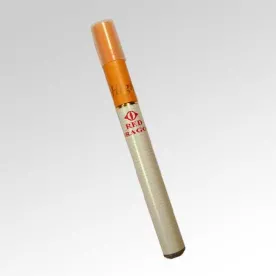Committee on the Review of the Health Effects of Electronic Nicotine Delivery Systems Releases Report Documenting Massive Review of Existing Scientific Literature
On January 23, 2018, the National Academies of Sciences, Engineering and Medicine (hereinafter referred to as the “National Academies”) Committee on the Review of the Health Effects of Electronic Nicotine Delivery Systems (ENDS) (hereinafter referred to as the “Committee”) released a report entitled, “Public Health Consequences of E-Cigarettes” (hereinafter referred to as the “Report”).[1] The Report, which was the result of the Committee’s review of over 800 articles identified from a massive literature search of six different databases, noted that the Committee found sufficient literature to suggest that, “while there are risks associated with e-cigarettes, compared with combustible tobacco cigarettes, e-cigarettes contain fewer toxicants; can deliver nicotine in a manner similar to combustible tobacco cigarettes; show significantly less biological activity in a number of in vitro, animal, and human systems; and might be useful as a cessation aid in smokers who use e-cigarettes exclusively.”[2] In sum, the Report acknowledges that vaping is significantly less harmful than smoking traditional combustible tobacco cigarettes
Background on the Report
The Consolidated Appropriations Act of 2016 included language directing the Center for Tobacco Products (CTP) of the U.S. Food and Drug Administration (FDA) to “contract with the Institute of Medicine to conduct an in-depth evaluation of available evidence of health effects from e-cigarettes and recommendations for future federally funded research.”[3] CTP contracted with the National Academies to convene an ad-hoc committee to conduct this evaluation, which resulted in the creation of the Committee. The Committee’s literature review included an analysis of data on both short-term and long-term health effects in: (1) users of ENDS, including health effects associated with the use of these devices (e.g., cigalikes, tank systems, mods); (2) vulnerable populations of users (e.g., youth, pregnant women, individuals with underlying medical conditions (e.g., heart disease, pulmonary disease); and (3) non-users of ENDS exposed to second-hand and third-hand aerosol generated by use of these devices.[4]
The Report Concludes That Vapor Products Are Less Harmful Than Combustible Tobacco Cigarettes
Perhaps the most significant aspect of the Report is the Committee’s implicit and explicit conclusion that e-cigarettes are safer than combustible tobacco cigarettes. Although the Report is more cautious than the Royal College of Physicians Report,[5] the Committee nevertheless acknowledged that the “current evidence points to e-cigarettes being less harmful than combustible tobacco cigarettes.”[6]
Moreover, several of the Report’s findings bolster the Committee’s conclusion that e-cigarettes are less harmful than combustible tobacco cigarettes. For example, the Committee found “conclusive evidence that completely substituting e-cigarettes for combustible tobacco cigarettes reduces users’ exposure to numerous toxicants and carcinogens present in combustible tobacco cigarettes.”[7] Indeed, all cross-sectional and longitudinal studies comparing exposure to nicotine and toxicants in smokers who substituted e-cigarettes for their combustible cigarettes, showed that smokers who substitute e-cigarettes for their combustible cigarettes had significantly reduced levels of biomarkers of exposure to potentially toxic chemicals.[8] Similarly, the Committee observed that “although some studies found similar harm from e-cigarettes, no studies found that e-cigarettes were more harmful than combustible tobacco cigarettes among combustible tobacco cigarette smokers who switched to exclusive e-cigarette use.”[9]
Further, the Committee concluded that there was “substantial evidence that completely switching from regular use of combustible tobacco cigarettes to e-cigarettes results in reduced short-term adverse health outcomes in several organ systems.”[10] In addition, studies reviewed by the Committee showed that use of an e-cigarette in indoor environments may involuntarily expose non-users to nicotine and particulates, but such exposure is at lower levels compared with exposure to secondhand tobacco smoke from combustible tobacco cigarettes.[11] The Report also noted that, “among dual users, e-cigarettes may help maintain smoking reduction.”[12]
At the same time, the Report notes that “the proportion of U.S. adults who consider [e-cigarettes] to be as harmful as combustible tobacco cigarettes has increased over time,” indicating that the public needs information related to the relative harm of e-cigarette products.[13] However, the “modified risk” provisions of the Tobacco Control Act (the “Act”) prohibit vapor companies from making truthful claims that their products present reduced-risk compared to combustible cigarettes, or even that their products do not contain or produce smoke or tar, without submitting an extensive application and securing FDA’s approval to make such claims.[14] Indeed, the modified risk standard is so stringent that it is highly unlikely any such claim will ever be approved for a vapor product.[15]
Accordingly, an unintended consequence of FDA’s approach to implementing the Act may be the proliferation of misinformation concerning the relative risks of vapor products and combustible tobacco cigarettes.[16]
Youth Use of E-Cigarettes
A frequent area of concern for courts[17], FDA, and public interest groups involves the use of e-cigarettes among youth. As background, the Committee notes that the “proportion of youth who reported ever using e-cigarettes varies substantially across surveys” from as low as 10.7 percent to as high as 27.1 percent.[18] The Committee indicates that “early results suggest” that e-cigarette use “stabilized or decreased in youth between 2015 and 2016, despite increases between 2011 and 2015 across a range of surveys.”[19] Among those who reported having ever used an e-cigarette, youth most commonly reported using rechargeable/refillable tank-style devices, with more than half (53.4 percent) of middle and high school students reporting using only this kind of device.”[20]
In its consideration of the impact of e-cigarette use on “ever-use” of combustible tobacco products, which critically, is defined as smoking a single cigarette at any point in one’s life, the Report considers two dueling hypotheses (i.e., the diversion hypothesis and the catalyst hypothesis). The Committee explains that e-cigarettes could have a preventive effect if the diversion hypothesis – the hypothesis that because some youth possess an elevated drive to engage in exploratory or risk-taking behavior, the availability of e-cigarettes allows such young people to satisfy their curiosity and drive for novelty without resorting to combustible tobacco cigarettes – is proven. Similarly, if the catalyst hypothesis – the hypothesis that e-cigarettes attract low risk teens who would not otherwise try combustible tobacco cigarettes and, once these teens have tried e-cigarettes, they are more likely to try combustible tobacco cigarettes – holds, e-cigarette use would increase the risk of ever-smoking.[21] Of course, e-cigarette use may also have no effect on combustible tobacco cigarette ever use in adolescents and young adults.
Keeping in mind the definition of “ever-use” noted above (i.e., smoking a single cigarette at some point) the Committee concluded, among other things, that “there is substantial evidence that e-cigarette use increases the risk of ever using combustible tobacco cigarettes among youth and young adults.”[22] While news headlines across the world ran with this conclusion to claim that e-cigarettes “lure” kids into smoking, the Report also observes that “the population-based data broadly show opposing trends in e-cigarette and cigarette use prevalence across time among U.S. youth in recent years and thus do not provide confirmatory evidence of the epidemiologic person-level positive associations of vaping and smoking.”[23] In this regard, we note that the National Youth Tobacco Survey data shows that youth smoking rates have been falling rapidly.[24] Between 2011 and 2016, current use of cigarettes by high school students fell from 15.8 percent to 8.0 percent, and use of cigars and pipes also fell.
Implications of the Report
Ultimately, the Report is the most complete analysis of existing research on the public health consequences of e-cigarettes in the United States. Further, the Report provides the imprimatur of the National Academies on a conclusion long recognized by the vaping community: e-cigarettes are significantly less harmful than combustible tobacco cigarettes.
[1] National Academies of Science, Engineering and Medicine: Committee on the Review of the Health Effects of Electronic Nicotine Delivery Systems, The Public Health Consequences of E-Cigarettes (eds. Kathleen Stratton et al., 2018), available at https://tinyurl.com/ya4w37kb (hereinafter, referred to as the “Report”).
[2] Report, supra n.1., at S-9.
[3] Id., supra n.1., at 1-1, 1-2 (Box 1-1 Statement of Task).
[4] Id., supra n.1., at S-9.
[5] Tobacco Advisory Group of the Royal College of Physicians, Nicotine Without Smoke: Tobacco Harm Reduction (2016), at 87, available at https://tinyurl.com/h5ypa7s (stating, “although it is not possible to precisely quantify the long-term health risks associated with e-cigarettes, the available data suggest that they are unlikely to exceed 5% of those associated with smoked tobacco products, and may well be substantially lower than this figure.”).
[6] Report, supra n.1., at 18-23.
[7] Id., supra n.1., at 18-13; See also Id., at 5-32 (“Conclusion 5-3. There is substantial evidence that except for nicotine, under typical conditions of use, exposure to potentially toxic substances from e-cigarettes is significantly lower compared with combustible tobacco cigarettes.”) (emphasis in original).
[8] Id., supra n.1., at 18-13.
[9] Id., supra n.1., at 18-23.
[10] Id., supra n.1, at 18-24.
[11] Id., supra n.1., at 18-28.
[12] Id., supra n.1., at 18-25.
[13] Id., supra n.1., at 18-2.
[14] 21 U.S.C. § 387k.
[15] FDA may issue a modified risk order only after the manufacturer makes numerous showings based on scientific data. Specifically, the applicant must demonstrate that the product will:
-
significantly reduce harm and the risk of tobacco-related disease to individual users; and
-
benefit the health of the population as a whole taking into account both users of tobacco products and persons who do not currently use tobacco products.
21 USC § 387k(g)(1) (emphasis added). As to the “population effects” prong of the standard, FDA must consider:
-
relative health risks of the subject tobacco product;
-
likelihood that those who do not use tobacco products will start using the subject product (e., initiation); and
-
likelihood that users who would otherwise stop using tobacco products will start using the subject product (e., cessation)
21 USC § 387k(g)(4).
[16] See Family Smoking Prevention and Tobacco Control Act, Pub. L. No. 111-31, 123 Stat. 1776 (2009) (hereinafter referred to as the “Act”); See also 21 U.S.C. § 387k.
[17] See e.g., Discount Tobacco City & Lottery, Inc. v. United States, 674 F.3d 509(6th Cir. 2012), (finding a “substantial state interest in curbing juvenile tobacco use that can be directly advanced by imposing limitations on the marketing of tobacco products.”).
[18] Report, supra n.1., at 1-3 (compare the Population Assessment of Tobacco and Health (PATH) survey (Wave 1 in 2013-2014) finding only 10.7% of youth ages 12-17 reporting ever using an e-cigarette once or twice with the National Youth Tobacco Survey finding that 27.1% of middle and high school students ever used e-cigarettes.).
[19] Id., supra n.1., at S-1, 2.
[20] Id., supra n.1., at 1-5.
[21] Id., supra n.1., at 16-3.
[22] Id., supra n.1., at 16-30 (emphasis added).
[23] Id., supra n.1, at 16-28; See also Sheila Kaplan, Vaping Can be Addictive and May Lure Teenagers to Smoking, Science Panel Concludes, The N.Y. Times (Jan. 23, 2018).
[24] Jamal A, Gentzke et al. Tobacco Use Among Middle and High School Students — United States, 2011–2016, 66 MMWR Morb Mortal Wkly Rep. No. 23, at 597-603 (June 16, 2017).




 />i
/>i

